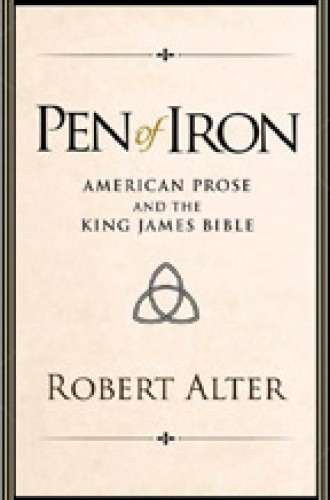A review of Pen of Iron
My go-to Bible is the New Revised Standard Version. I could probably find a King James somewhere at my church, but it's not the Great-Big-Bible-on-the-Lectern, and it's not the version of the pew Bibles. And yet some pigheaded, atavistic part of me believes that the right way to say the 23rd Psalm is the way it is in the King James (even though I've read it in Hebrew).
Sometimes the older folks in my congregation advocate for the superior style of the King James. Which leads me to the question: When is the last time you thought about its literary style? Robert Alter, professor of Hebrew and comparative literature at the University of California-Berkeley, claims that acknowledgment of style, let alone analysis of it, has fallen by the wayside due to the academic world's focus on writers' ideology and race-, class- or gender-based political agendas.
In Pen of Iron, Alter's goal is to explore how the King James Version "made a difference in style for certain major American novelists" and to elucidate its "abiding role . . . in the shaping of style in the American novel." In particular, Alter examines Lincoln's Gettysburg and Second Inaugural addresses and the novels Moby-Dick, Absalom, Absalom!, Seize the Day, The Sun Also Rises, Gilead and The Road.





